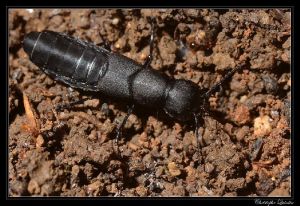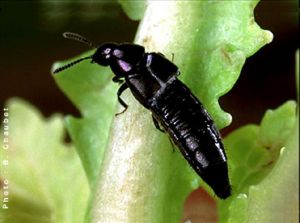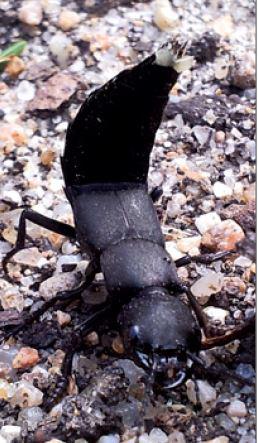Rove beetle

The most numerous family of beetles (19%), very abundant in agricultural environments (sometimes more abundant than carabid beetles).
Observable from mid-May to mid-July, oviposition in the soil with 2 to 3 larval stages with no known overwintering phenomena.

Habitat : damp, shadedareas such as bedding, dead wood, rocky clumps, moss, hedges, manure heaps, plant collars.
Usual method of eliminating bio-aggressors
High capacity for movement (migration and colonisation), wide diversity of species in high densities with high pest control potential.
Generalistpredators : nematodes, mites, springtails, aphids, caterpillars, wireworms and other invertebrates. Larvae to predators of nymphs, larvae and overwintering adults. Can be a parasite of invertebrates.
- Genera Oligota and Tachyporus with mites, scale insects, caterpillars, flies and maggots.
- Genus Aleochara with parasitoids of fly pupae
- Ocypus olens for slugs, snails, cutworms, codling moth and budworm larvae

Technical and agronomic management advice to encourage them
Favourable practices
- Grass strips, hedges, dead leaves
- Stacked logs, boards
- Low stone walls
Unfavourable practices
- Phytosanitary products (insecticides)
- Nitrogen and phosphorus fertilisers
Observation methods
Appendices
This article was written in partnership with <a href="https://www.agrifind.fr/alertes/auxiliaires-de-culture/auxiliaires-staphylins">Agrifind</a> and <a href="https://www.terresinovia.fr/">Terres Inovia</a>.

